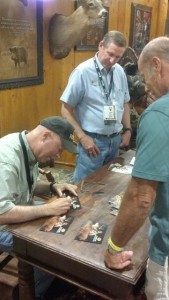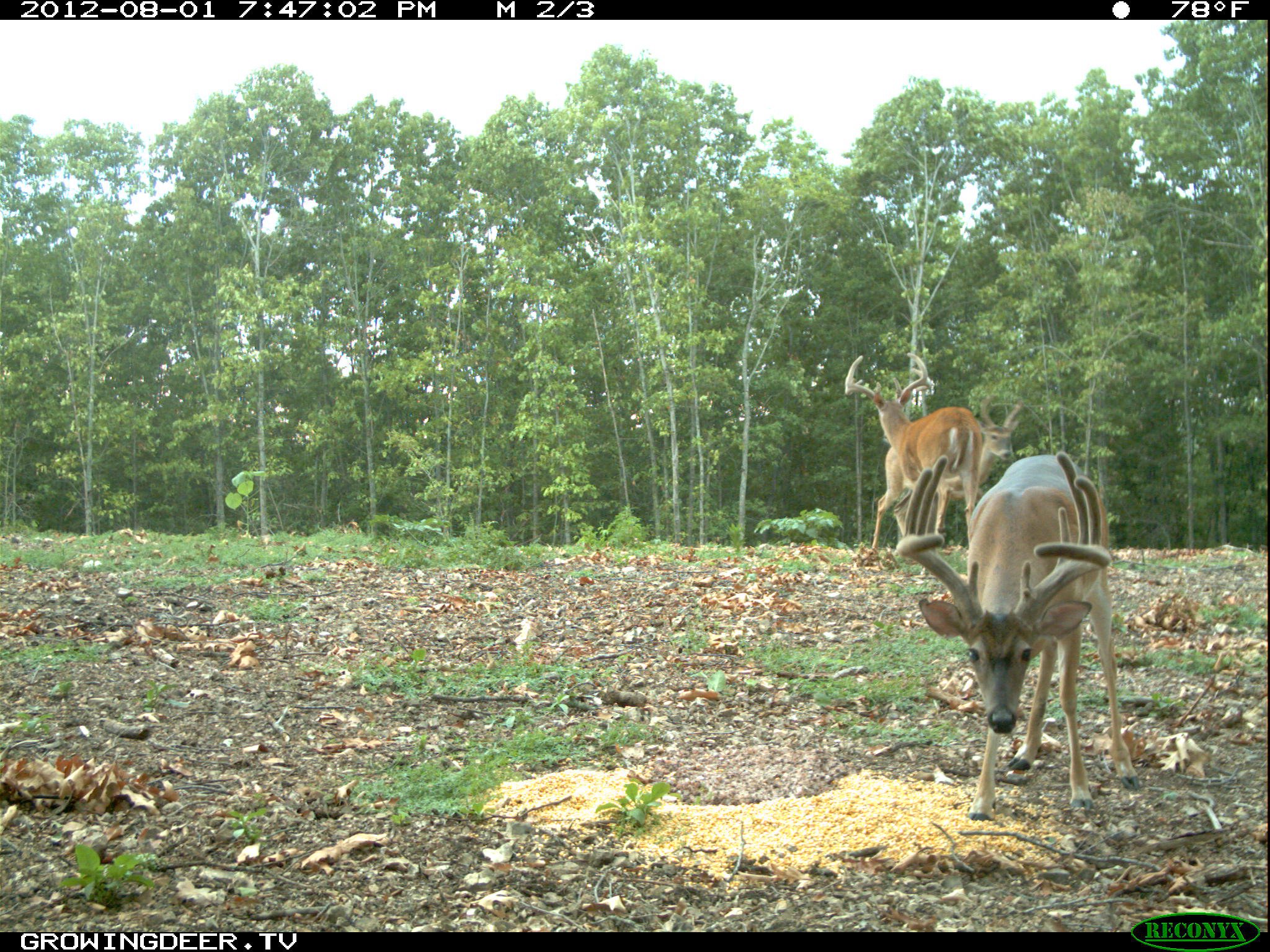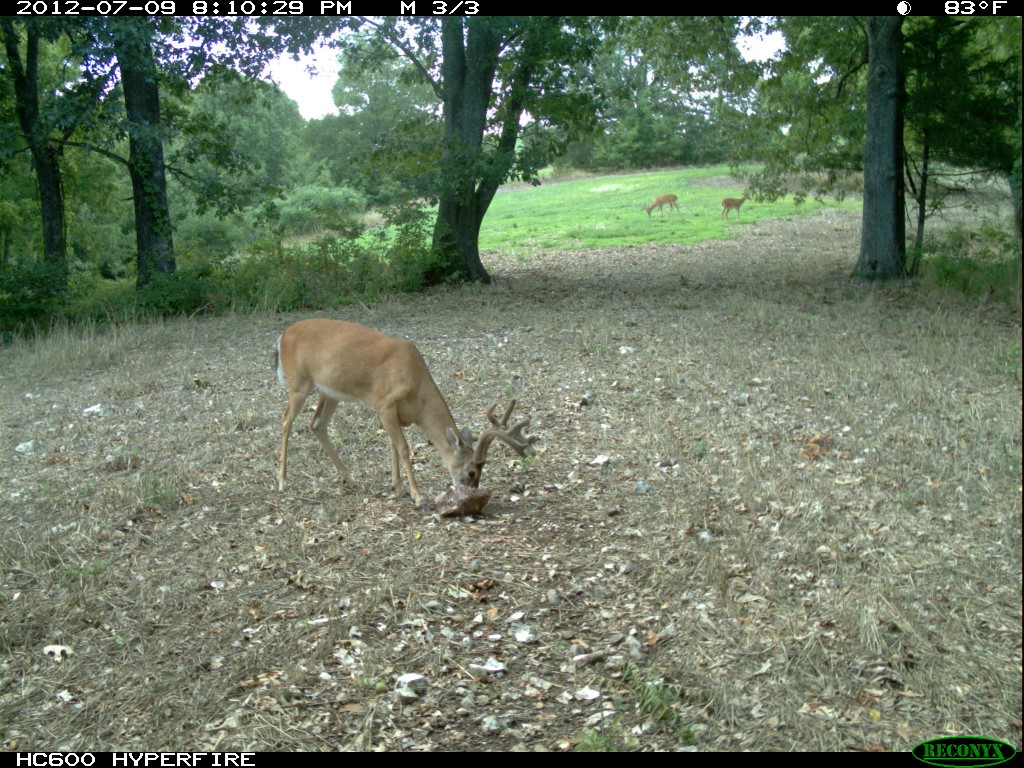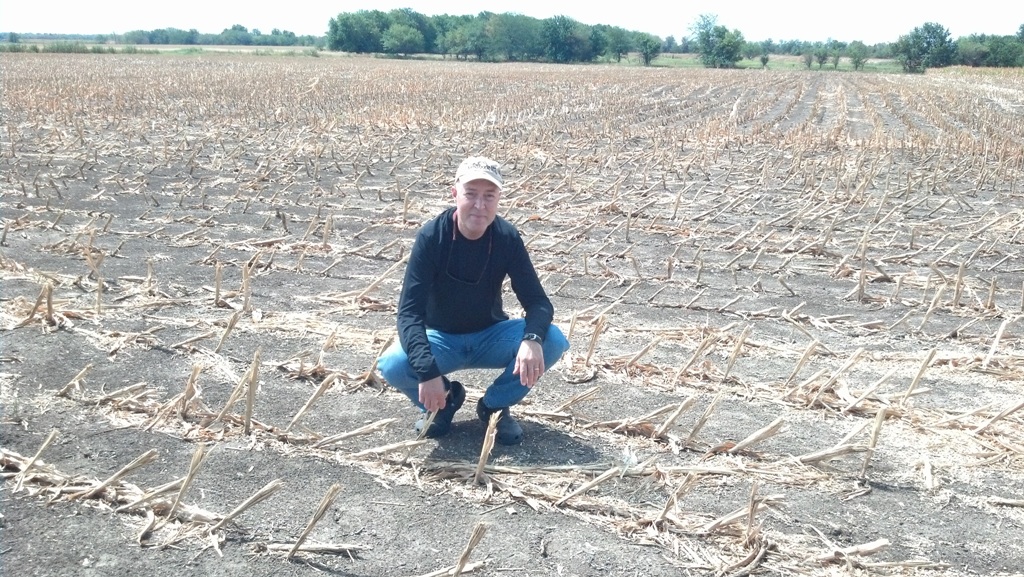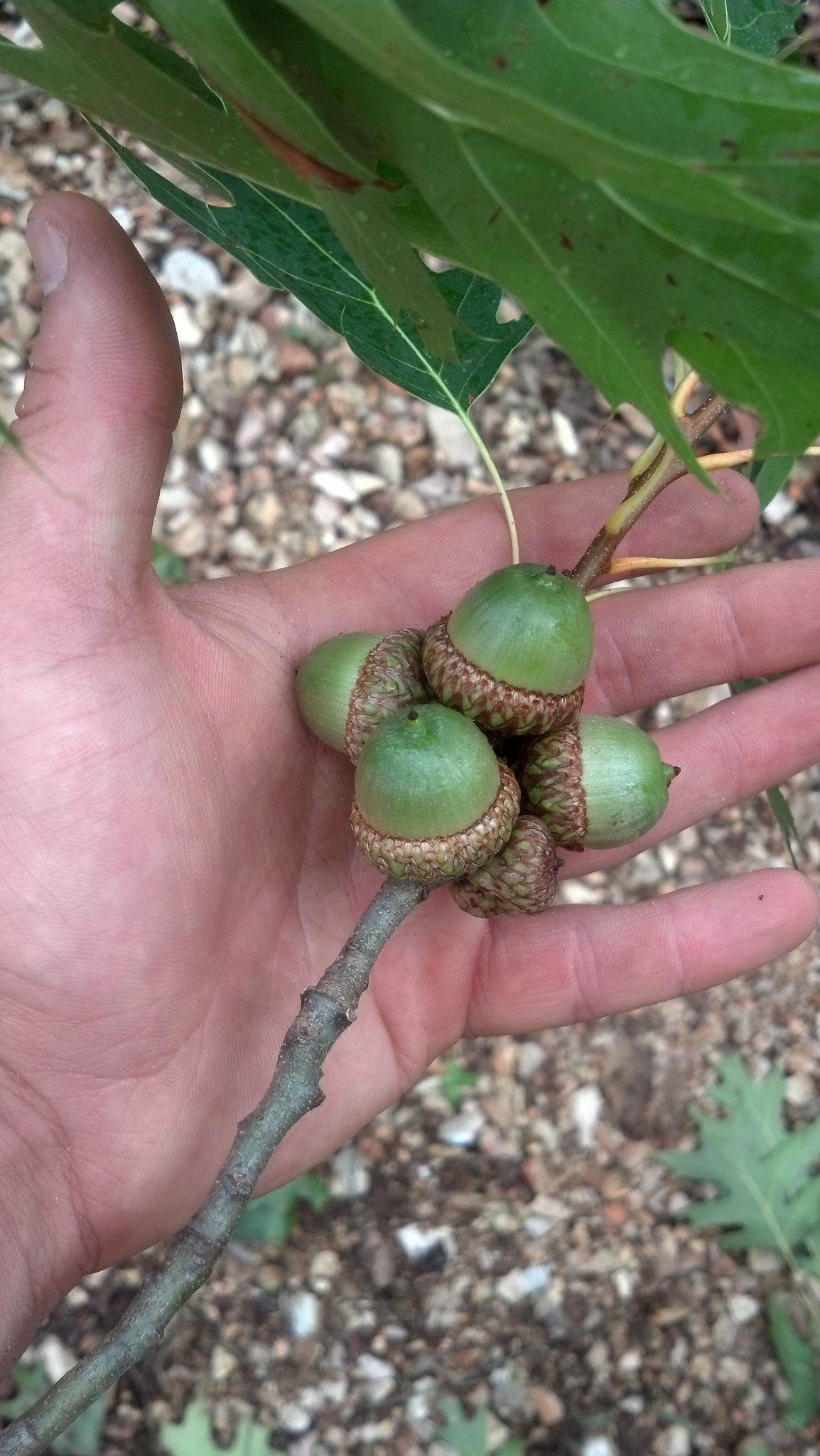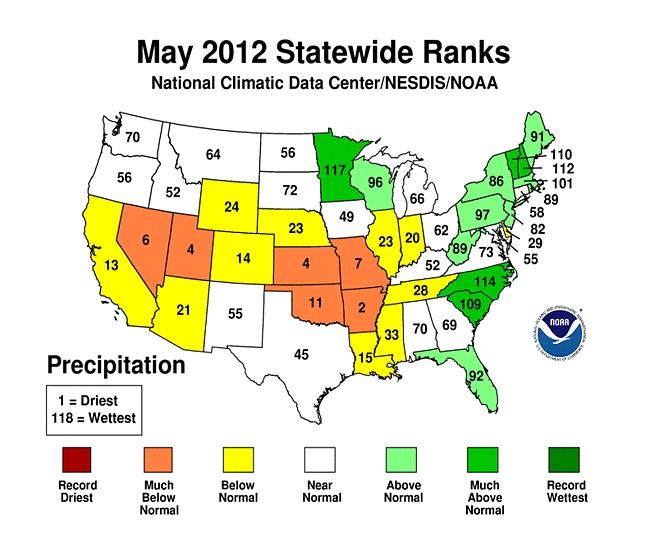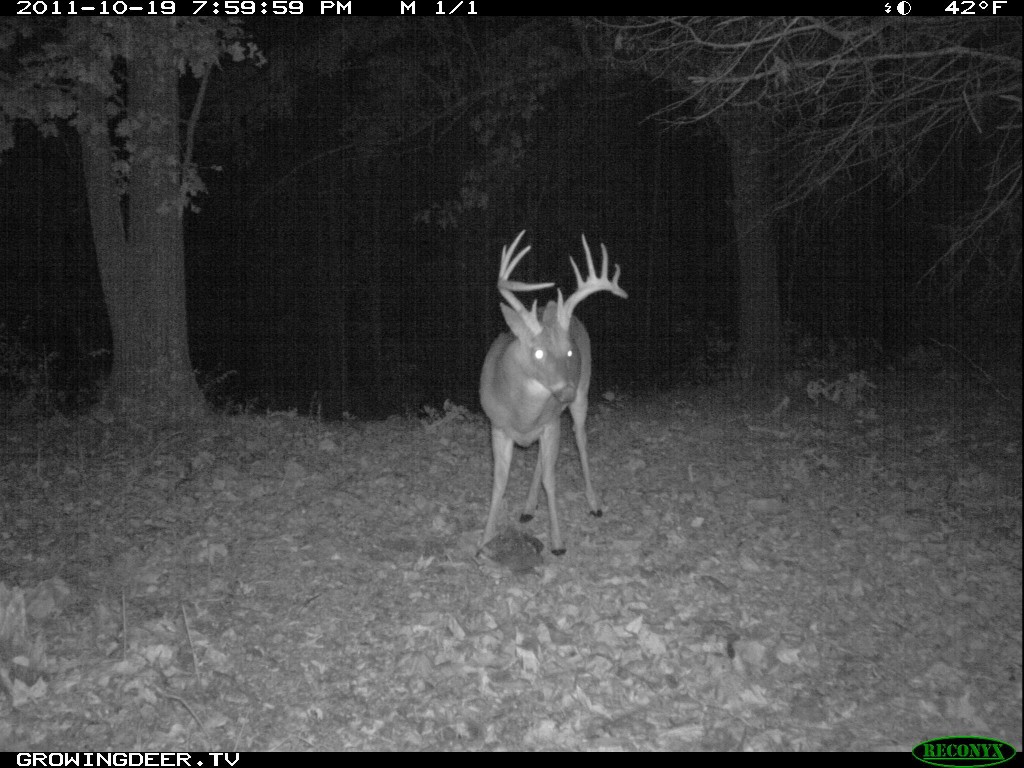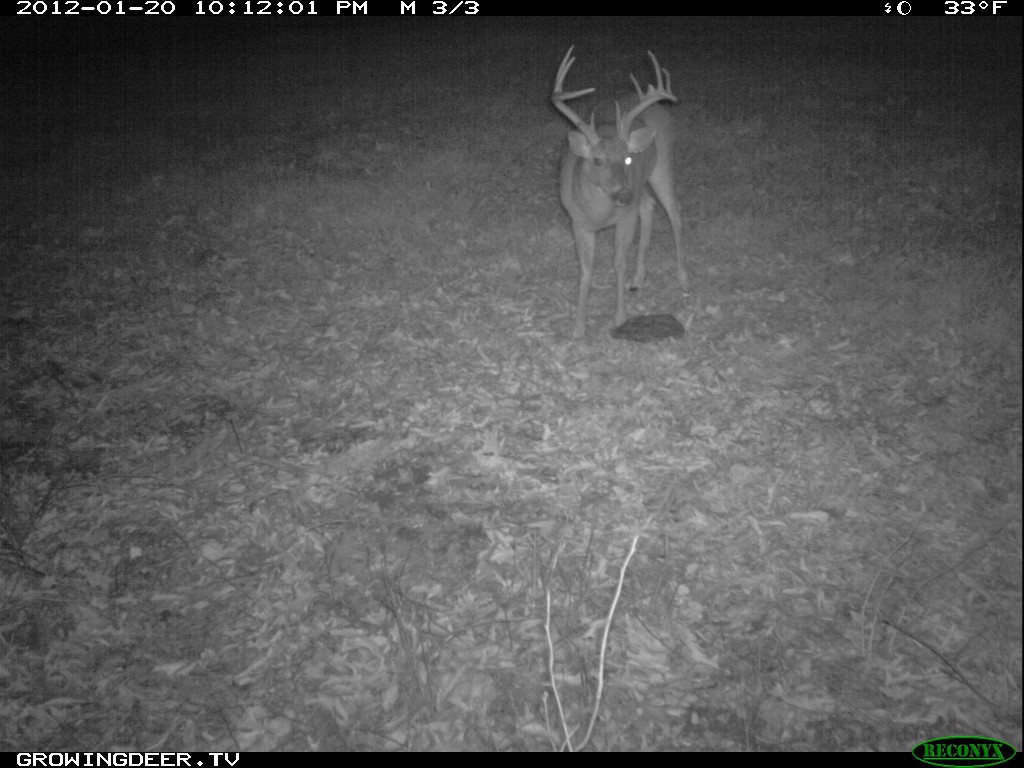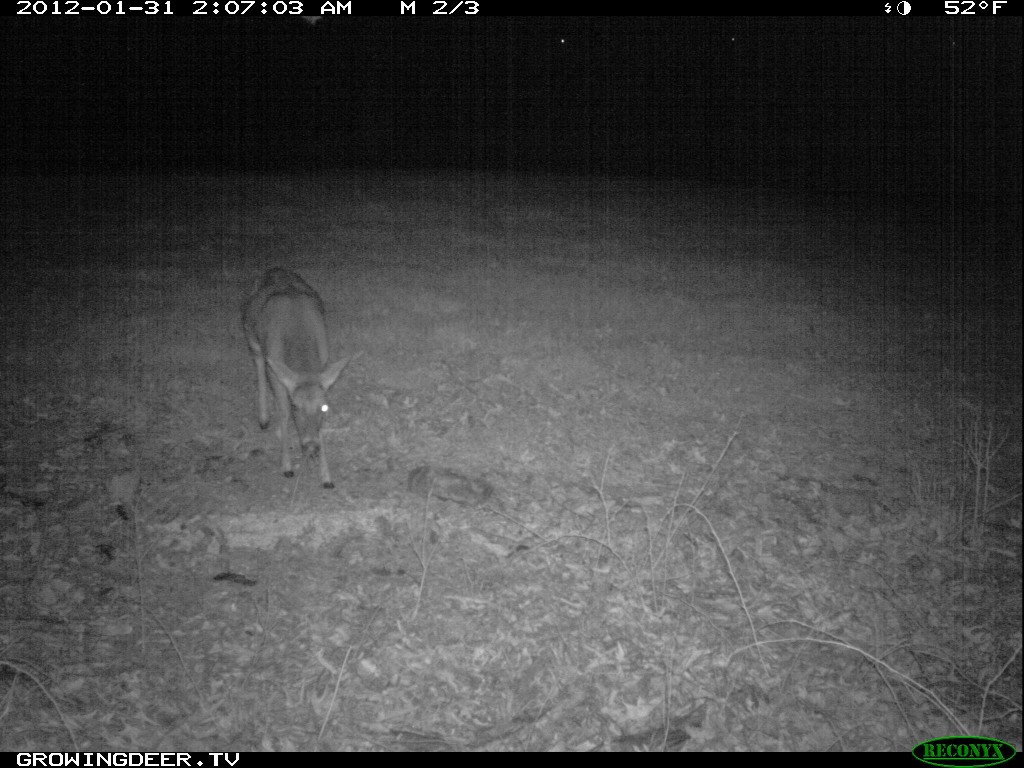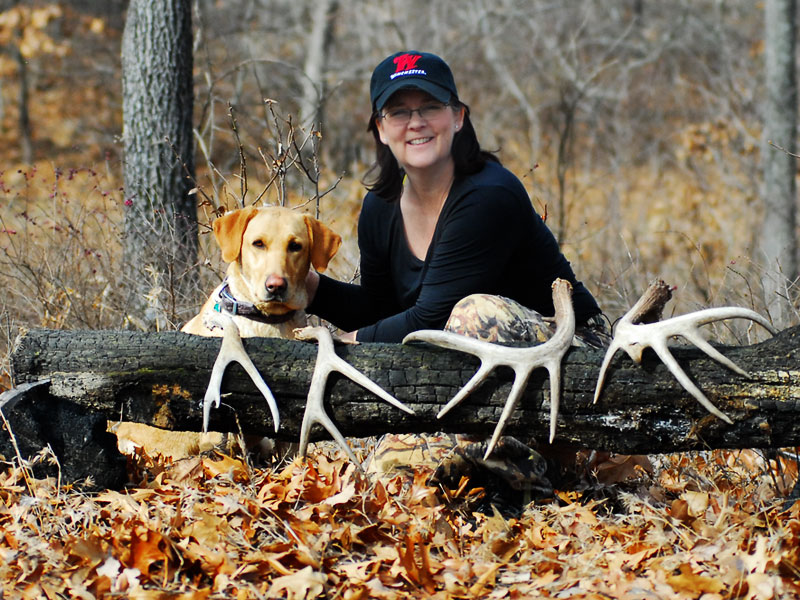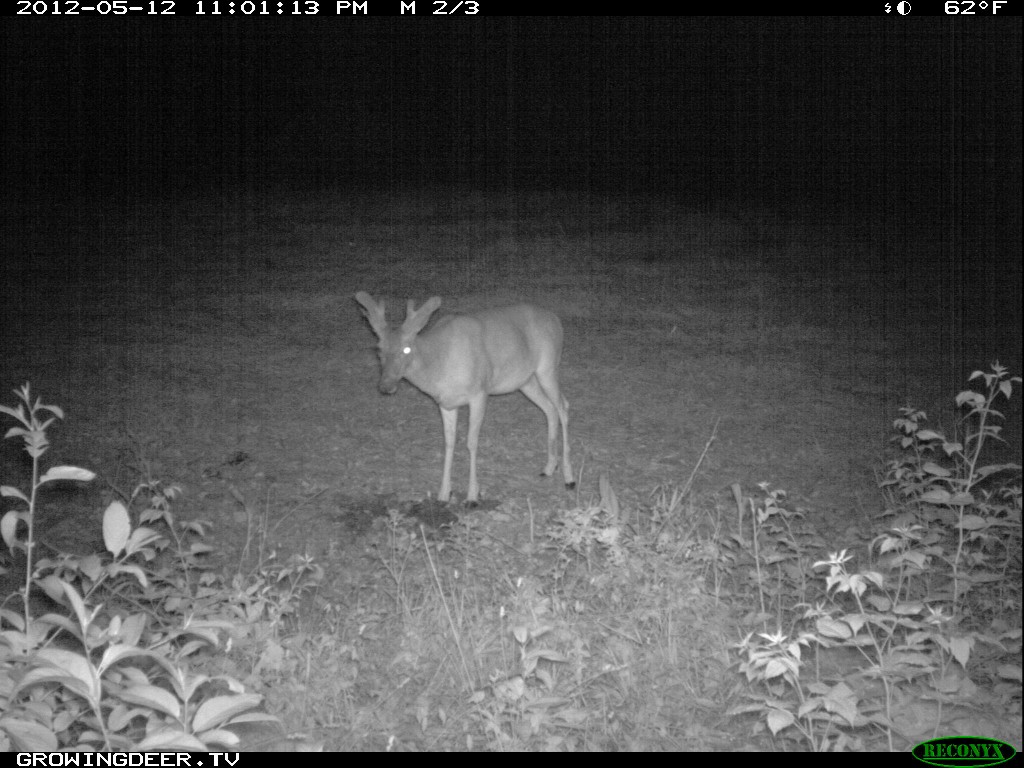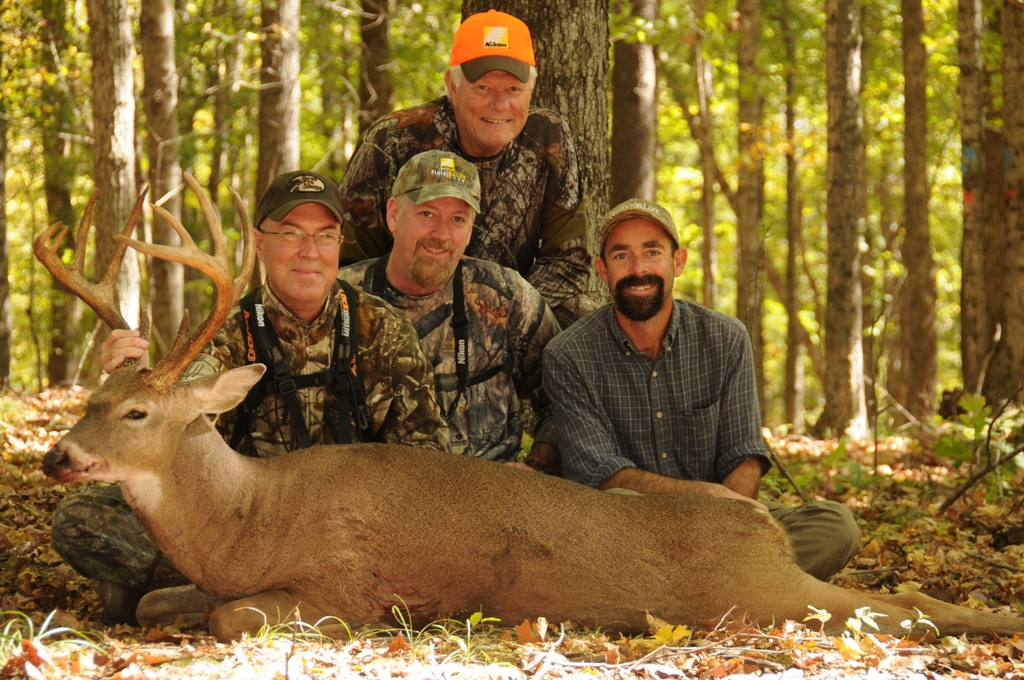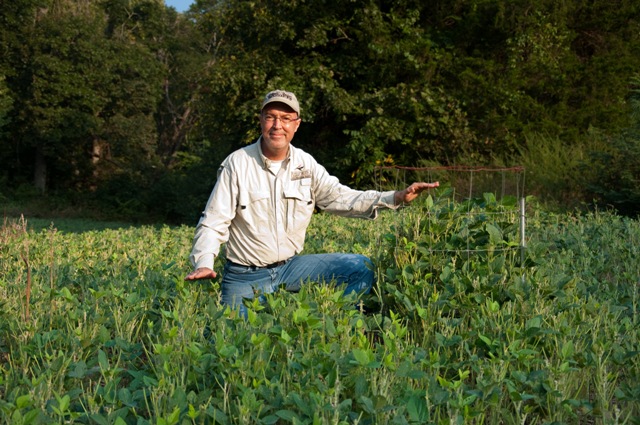Category: Deer Hunting
Split Brow During Daylight
It’s August 10 and The GrowingDeer.tv Team and I are attending the Land and Wildlife Expo and QDMA National Convention here at the beautiful Gaylord Opryland Resort in Nashville, Tennessee.
It’s been a fun couple of days in seminars, touring the indoor expo and meeting the GrowingDeer.tv fans. With all the activities and excitement going on, one thing hasn’t escaped my mind. Wednesday morning before we left for Nashville, Grant and I were going through Reconyx cards and we discovered that Split Brow has been frequently using a camera survey location DURING DAYLIGHT!! These are the first images of Split Brow during daylight hours. Even better, he’s present multiple days, morning and evening, all during daylight. If any of you follow Grant on Facebook you may already know that Split Brow had an eye punctured during November of 2011. So now I find myself wondering: Has age and injury made Split Brow more susceptible to harvest? I HOPE SO! Because he has been nothing but a ghost in years past! One thing is for certain, it’s that time of year to be fine tuning your bow, treestands, and preparing your camouflage so when that big buck makes his appearance under your stand you’re 100% confident.
Grant will continue with the part two of Scouting for Mature Bucks next week!
Dreaming of Giant Whitetails together,
Adam
Scouting for Mature Bucks, Pt. 1
There are five bits of information I strive to get starting now and throughout deer season that helps me pattern and harvest mature white-tailed bucks. These include:
- Determining if mature bucks are in the area
- Learning which mature bucks move more during daylight
- The locations of food, cover and water within their range
- Which habitat features (food, cover, and water) are most huntable under specific conditions
- Characteristics of targeted bucks
I’ll share my thoughts on the first three of these today and finish part 2 next week.
Scout to determine if mature bucks are in the area: The first step to harvesting a mature buck is hunting where mature bucks live. I don’t mean hunting in Kansas because it produces mature bucks annually. I mean hunting within the range of one or more mature bucks. To be more specific, I mean having stands/blinds in an area where a mature buck is active during hunting season. Seeing mature bucks in a bean field that’s recently been harvested will likely result in the hunter having plenty of time to read. This is especially true if a more preferred food source (standing beans, etc.) occurs within that buck’s home range during the remainder of hunting season.
Learning which mature bucks move more during daylight: Seeing or getting a Reconyx image of a mature buck is always a thrill. However getting multiple pictures of a mature buck during daylight is much better. Bucks have unique personalities. Finding bucks that tend to move during daylight hours is a huge step toward locating harvestable mature bucks! Gads of studies using GPS collars, etc., have conclusively shown that most mature bucks move more at night. Finding the buck that shows a trend of being active during daylight in an area where you have permission to hunt is a HUGE step toward harvesting that deer.
The locations of food, cover, water within their range: Most stands will be located near food, cover, or water. These are necessary components of habitat for a deer to survive. Knowing where each of these habitat components is located and which one the buck frequents the most during daylight is critical for stand placement. I often don’t place a stand directly overlooking food, cover, or water. Rather I place my stand in areas where I believe the buck is traveling to one of these critical types of habitat. Mature bucks will often reach these destinations just at or during dark. By selecting a stand location along his travel route, I’ve increased my odds of seeing him during legal shooting hours.
If the buck is using more than one source of food, cover, and water during daylight, there’s an even more important factor that will determine my stand location. I’ll share that next week.
It’s almost deer season! Let the serious scouting for 2012 begin!
Growing (and hunting) Deer together,
Grant
Deer and Silage Corn
Hunters that live in the Midwest and those that travel there each fall to hunt may need to change their strategies and/or stand locations this fall. This is because of corn – or the lack there of!
There are usually 90 + million acres of standing corn throughout the Midwest during the beginning of deer season. Standing corn provides both cover and food. In many areas, standing corn is the best cover for deer within their range. In addition, corn’s grain is good source of carbohydrates which deer aggressively seek during the fall. This is in part because deer are genetically programmed to store fat to survive winter.
Knowing this preference for corn has helped many hunters pattern mature bucks. Once the corn is harvested deer become easier to pattern as their available sanctuaries are limited and easy to locate. In addition, deer continue to return to the harvested corn fields seeking the grain spilled by the combine.
This cycle will not occur in many areas of the Midwest during the 2012 deer season. Due to the drought corn crops in many areas won’t produce a good yield. Many, many farmers are currently cutting their corn crops as silage in an effort to salvage what’s available before it withers away.
Unlike harvesting ripened corn, cutting corn for silage involves harvesting the entire stalk. There is no grain spilled as part of the harvest. This leaves no cover (not even enough stalks to hide a deer) and certainly no grain to attract deer. This will cause a major change of how and where deer use their home range. Some bottlenecks, travel corridors, etc. won’t be used by bucks as they have been in the past. Likewise, deer will use other portions of their range much more than during “normal” years.
This is not a year to simply assume that traditional stand locations are the best. This is a year to increase the amount of effort you scout in proportion to the magnitude of the change in food and cover availability at the location where you hunt. Like many farmers, you may have to change strategies to salvage your hunt this fall.
Growing (and hunting) Deer together,
Grant
Acorns and Patterning Bucks
I spend a bunch of time each year patterning bucks at The Proving Grounds. The largest factor that makes this job easy or difficult is the size of the acorn crop. Unfortunately (even with the drought) there is a very large acorn crop developing.
Whitetails in most areas have been eating acorns as long as there have been acorns. They obviously enjoy the taste of acorns as they often abandon soybeans, etc., as soon as acorns begin to fall. Patterning deer that are feeding on acorns can be easy if you hunt where oaks are somewhat rare or limited in distribution. This would include such areas as the edge of prairies, where most of the land is in crop production, etc. However, if you hunt near swamps, mountains, etc., where oaks are the most common type of land cover, you know patterning deer during years with large acorn crops can be very challenging.
When acorns are the primary food source, bucks can literally bed and eat within yards of each other for days at a time. It’s tough to approach and hunt deer that have very limited movement between food and cover. In addition, during years with large acorn crops bucks tend to feed on acorns throughout most of the deer season. Food plots can be very unproductive stand sites until very late during the season.
With this knowledge, I’m scouting and hanging stands that allow me to approach and leave locations of acorn producing oaks with the minimum disturbance to the area.
If you live in areas with lots of oaks, I suggest you start scouting for acorns now. By scouting the tops of trees you can determine the size of the acorn crop where you hunt. If you hunt in an area where oak trees are rare, this is an easy task and great hot spots can be found relatively easily! If you hunt in areas where oak trees are the dominate type of cover, get prepared mentally for a challenging hunting season.
Growing (and hunting) Deer together,
Grant
Scouting Whitetails With N.O.A.A.
It’s been very dry throughout much of the whitetail’s range so far during antler growing season. For example it was the second driest May since records have been kept in Arkansas, fourth in Kansas, seventh in Missouri, and eleventh in Oklahoma. N.O.A.A has been keeping records 118 years. It has been very dry during the growing season in these states.
These rankings are based on statewide averages. I think it is drier at my place (just a few miles from Arkansas) than the Missouri average indicates. Likewise, I’m sure some areas in these states have received an isolated thunderstorm or two and aren’t as dry as indicated by these statewide averages.
Plants need water to transport nutrients from the soil and air into and throughout the plant. Without adequate moisture, plants are simply not as nutritious compared to more normal growing conditions. Remember plants are simply transfer agents and if plants are lacking nutrients, so are the critters that consume them. Deer in drought areas won’t produce as large of antlers or as many (or healthy) fawns compared to the same deer during better growing conditions (different years).
Therefore droughts have a huge impact on hunters deciding on where (which state or region) to go hunting and deer herd managers deciding on whether to harvest bucks during drought years. I use maps to plan where to hunt and data from N.O.A.A can be a very valuable scouting tool!
Is the primary goal of planning an out of state hunt is to chase deer with larger antlers than what’s typically produced near your home? Then studying the N.O.A.A. data and determining the severity and duration of droughts can be just as important as studying the average antler size from specific counties, etc.
For example, planning a deer hunt in Kansas might not yield the expected results if that area is experiencing one of the worst growing season droughts during the past 100+ years. This is always dependent on the local conditions. For example, if you were planning to hunt near an irrigated soybean or alfalfa field, the drought might make the hunting better! The local herd had access to quality forage and all the deer in the neighborhood will likely be feeding at the irrigated crop versus spread out in the drought stricken native vegetation.
For deer managers that manage and hunt the same deer from birth through maturity, droughts may cause a different decision. Consider if you and your guests have passed bucks waiting for them to express 90+% of their antler growth potential. These bucks reach 4.5 years of age during an extreme drought. Due to a lack of quality forage, those mature bucks only express a portion of their antler growth potential – maybe not as much as they did when they were 3.5 years of age. The manager then has to decide if he and his guests will attempt to harvest the bucks even though they are only expressing a portion of their antler growth potential. This is a personal choice – one that should be based on the reason you/the landowner hunts.
Personally, I enjoy the challenge of hunting mature bucks and does. Given the extreme drought conditions at my place this year, I will focus on harvesting enough does to balance the amount of food available during these poor conditions. They will likely return again. During years with better growing seasons, each deer will have ample food to produce the best antlers and fawns they can.
I will also attempt to harvest a mature buck. I enjoy large antlers as much as most hunters. However, my primary satisfaction is being able to pattern and harvest a mature buck. My guests and I will only harvest a small portion of the mature bucks that our years of management efforts have yielded. I realize now that bucks will not express their full antler potential this fall. However, they will still be just as alert and skilled at avoiding predators (2 and 4 legged). The hunt will still score as much to me as if I was hunting during a year with average or better growing conditions.
I hope the growing conditions are good where you hunt. If not, I hope you still enjoy the hunt!
Growing Deer (during all conditions) together,
Grant
Patterning Mature Bucks
I enjoy researching and managing deer. I’ve spent my career learning about deer – their behavior, how to improve their habitat, etc. However, my passion is driven by being a hunter – and learning how to pattern mature bucks. Patterning bucks simply means learning their habits, personality, and range.
Two tools that I use to pattern mature bucks are Reconyx trail cameras and Trophy Rocks. Even though it’s more than four months until deer season opens in Missouri, I’ve started patterning a mature buck I call Split Brow.
This is a picture of Split Brow from last fall. He was one of the bigger bucks that I knew about at my place. My Reconyx camera captured lots of images of Split Brow, but almost all of them were at night. I didn’t hunt for Split Brow as I had no indication he was moving during the day with any regularity. To my knowledge, he maintained this nocturnal only pattern through the hunting season. That’s not to say Split Brow wasn’t occasionally active during the daylight. However, the vast majority of pictures of him were at night. Hunting in his core area would have likely alerted him and I would have had a very small chance of seeing him during daylight. So, I hunted a buck that tended to be active more during daylight hours.
During the late season Split Brow apparently was in a tough fight. He was blinded in his right eye and broke the G3 of the left side of his rack. Disney got it wrong — life is not fun and games in the wild.
Split Brow shed his antlers soon after he received these injuries. I was worried he wouldn’t survive due to a secondary infection or internal injuries. Knowing that Split Brow had just shed, Tracy and Crystal (her lab) went hunting for his antlers. Since we had a Reconyx image of him that morning at a Trophy Rock with both antlers and another that evening showing he had shed both antlers, I knew Tracy and Crystal would have a relatively small area to search. Within an hour they had found both of Split Brow’s sheds.
Bucks aggressively seek trace minerals during the spring and summer (when antlers and fawns are developing) time of year so it was easy to see if Split Brow was alive by putting a Trophy Rock and Reconyx in his core area. It will be very interesting to watch his antlers develop this year and see if his antler configuration changes substantially.
Patterning bucks throughout the year helps me as hunter! It also teaches me much about how bucks use the existing habitat and what I need to do to improve it from a manager’s and hunter’s point of view. Stay tuned and I’ll keep you posted on how Split Brow develops this year and if his pattern changes to include more activity during the daytime. If it does, he’ll be at the top of my hit list.
In the mean time, grab some Trophy Rocks and dust off those trail cameras. It’s time to start patterning bucks where you hunt!
Growing (and patterning) Deer together,
Grant
Pt. 10: Top 10 Recommendations for Managing Land to Yield Mature, Huntable Deer
Part 10: Putting it all Together
I wrote this series to address several questions recently posted on my Facebook page. The questions were timely as there is a huge interest in hunting mature bucks. Folks are realizing that to hunt mature bucks, mature bucks must exist. For example, hunting mature bucks on properties where a majority of the yearling bucks are harvested annually is very frustrating.
Therefore it’s very important to have realistic objectives based on a property’s recent buck harvest. For example, if there have been an average of three bucks harvested per square mile on the property and/or neighborhood where you are hunting, there won’t likely be many bucks reaching maturity on that property. The bottom line is there must be mature bucks present to be harvested. Obviously, the more mature bucks in the area the better the odds of having an encounter with one. A higher percentage of the total buck harvest is usually composed of mature bucks in states with a more restrictive bag limit for bucks. Kentucky and Kansas are good examples of states with a restrictive buck bag limit and a trend of producing great mature bucks annually.
This is simply a trend. I’m aware of individual properties in most states that produce great mature bucks. These landowners or deer management cooperatives usually establish more favorable deer harvest guidelines than imposed by the state’s regulations. This is to say that the grass is not always greener on the other side of the fence (or border).
Simply allowing bucks to reach maturity doesn’t mean they will express their full antler growth potential. Bucks need an excellent source of nutrition throughout their life to express their full antler growth potential – in addition to living to maturity. Even further, the better health (good food, limited stress) the buck’s dam was in has an impact on the buck’s health.
This means that simply significantly increasing the quality of a buck’s diet for a year or two won’t necessarily allow him to express his full potential. The overall health of a buck (or other critter) is substantially impacted by their development years. When Tracy and I purchased The Proving Grounds, it was a horribly overgrazed cattle ranch. We’ve now owned it nine+ years and spent a lot of time and resources improving the habitat. However, the five year old bucks that are currently on our property were most likely from does that were raised in very stressful conditions. To determine the true potential of bucks at The Proving Grounds will require maintaining quality habitat long enough for does to be born from does that were raised with access to quality food and limited stress. Those does will need to have fawns, and then allow those male fawns to reach maturity. Let’s consider this three generations of deer – or 12+ years.
This process can be short cut if the property is in an area where quality nutrition has never been a limited factor, and the only missing piece of the deer management puzzle is allowing bucks to reach maturity. In other words, the lower the quality of habitat, the longer it will take to allow the herd to express its full potential. However, such land usually costs much less than row crop land where good nutrition has been available year round for many years.
I really enjoy the process of managing and hunting for mature bucks. I like going on suitcase hunts – hunting properties that I show up for a week or so a year and my only management activity is deciding to pass or pull the trigger. However, my passion is growing and hunting mature bucks. If you share my passion, we’ll keep learning together.
Growing Deer together,
Grant
Pt. 7: Top 10 Recommendations for Managing Land to Yield Mature, Huntable Deer
Part 7: Flat Ground – The Huntable Side
Last week I shared the advantages of flat ground to produce mature bucks. That discussion was more about the ability to produce quality forage, and therefore quality bucks (if they are allowed to mature). There is another substantial advantage to flat ground. It may be the best reason to seek a hunting property that is flat versus steep.
The huge advantage of hunting flat ground is that the wind seldom swirls where the topography is flat. The wind does change directions as fronts pass, etc., but it rarely swirls and certainly doesn’t swirl on a constant basis. Swirling winds are often caused by changes in topography. Changes in topography create eddies where the wind sinks and rises. Rapid changes of topography also create temperature gradients (warm air rises and cool air sinks). These temperature gradients cause thermals or air moving based on slope and temperature.
Deer move the most during dawn and dusk. There is more air movement due to thermals during these same time periods because this is when the temperature is changing the most. It may well be that in areas with steep topography, deer are the most active during dawn and dusk to take advantage of the swirling winds to aid their avoiding predators (2 and 4 legged). Swirling winds and thermals allow deer to detect predators from multiple directions – not just one (like what would occur in areas where the wind is typically out of one direction).
There can be some thermal action in flat country. However, the direction and duration of the thermals seem to be much more predictable compared to areas with steep topography.
Most hunters throughout the whitetails’ range are blessed enough to have access to hunt flat ground. My property is the opposite of flat. In fact, it changes elevation 350+ feet several times due to the ridges and creeks. To reduce the chance of being detected by a buck’s nose, I use a complete system of cleaning my gear and good personal hygiene, including doing laundry for better deer hunting. I use the natural Dead Down Wind products as they eliminate a wider spectrum of odors than most of the products that are created to only reduce odors created by bacteria. I also want to reduce odors on my gear and myself from lubricants and whatever else might alert bucks.
There are several advantages to hunting flat ground. These advantages include producing better quality forage so bucks can express more of their potential and being able to predict the prevailing wind direction while having fewer thermals. These are two huge advantages to any deer hunter.
Growing Deer together,
Grant
Pt. 6: Top 10 Recommendations for Managing Land to Yield Mature, Huntable Deer
Part 6: Flat Ground
I’ve been discussing how to manage land to produce mature and huntable bucks. It’s relatively easy to produce mature bucks. Simply don’t harvest them until they are 4+ years of age. I define mature for whitetail bucks as being four years old or older because by that age most bucks have expressed 90+% of their antler growth potential.
In this blog series I’ve also discussed management strategies which allow bucks to express their antler growth potential. Just because a buck is allowed to live until he is 4+ years of age doesn’t mean he will produce antlers to his full genetic potential. If he hasn’t had access to a quality diet throughout his life and experienced minimal stress, he will not produce antlers as large as his genetic potential.
Now that we discussed several aspects of managing deer so they can express their full genetic potential, I’d like to discuss how to harvest mature bucks. Last week I shared that I’d found several sheds in bottlenecks or pinch points while laying out a habitat management plan on a property in central Missouri.
I really enjoy finding sheds. However, finding where a mature buck has been is not the same as being where a mature buck is – within shooting range! Predicting where a mature buck will be during daylight hours and being there at the same time – especially accomplishing this on a year after year basis – requires a lot of skill and preparation.
Wonder why so many whitetail hunters go to areas that produce commercial row crops year after year? If you look at a map of the whitetail’s range, the portion of the area that produces commercial row crops is a relatively small portion of the whitetails range. Yet, the majority of Boone and Crocket and Pope and Young entries come from the areas where commercial crops are produced.
There are two simple reasons and they both relate to flat ground. Flat ground – especially in the Midwest is almost always better quality soil compared to where the topography is steep and the topsoil has been eroded. However, years and years of producing and harvesting commercial crops have significantly reduced the amount of nutrients and beneficial bacteria in the soil. Without adding fertilizer and beneficial microbes back to the soil, it would not be nearly as productive. These elements are rarely added back to the soil unless it is commercially farmed. Hence they are rarely applied to areas with steep topography.
My property, The Proving Grounds, is a perfect example. It has very steep terrain and was extremely eroded from exceedingly poor timber harvest and agricultural practices decades ago. There literally was no topsoil only rock – literally – only rock. I never disk a plot at my place because it would only shuffle rocks around and cause erosion of the limited amount of organic matter that is present.
However, by adding poultry litter that has been composted with beneficial, soil building bacteria added (Antler Dirt) I’ve significantly improved the quality of crops produced in my food plots. I can now grow quality crops, even on the rocky soil where I never disk! Remember that quality forage and grain crops are only nutrient transfer agents. They serve to transfer nutrients from the soil and air (air is roughly 78% nitrogen – capture that and never pay for nitrogen again!) and transfer those nutrients to deer and other plant consumers.
Some plants are better at capturing nutrients and transferring to consumers (deer, cattle, humans) than others. Those plants typically are the crops grown in commercial ag – to feed humans (and deer). Oak trees transfer nutrients – but the vast majority of the nutrients they transfer are tied up in the wood or the structure of the tree.
Soybeans also transfer nutrients but a much higher percentage of the nutrients they transfer from the soil and air are deposited in the soybean leaves and eventually the soybean pods. Deer readily consume soybean leaves and pods. Deer rarely consume the trunks of oak trees – and never express their full antler growth potential when oak leaves and acorns are most of their diet. This is a primary reason bucks of the same age class living where soybeans are commonly grown will have larger antlers compared to bucks living in areas that are primarily forested.
Some of you are already yelling “acorns.” Acorns are much lower in nutrient content than soybean leaves or pods – there is no comparison between the nutritional quality of acorns and soybeans – or the antlers produced by bucks that primarily consume either crop.
So, if you want to hunt mature deer that have expressed most of their antler growth potential, you need to hunt where the soil has plenty of nutrients and plants that efficiently transfer those nutrients from the soil and air to deer. This can be in regions were commercial crops are grown (flat land), or where quality food plots are maintained.
For example, there isn’t a commercial soybean or corn field for many miles from my property (The Proving Grounds). However, over the years, I’ve converted the few flat spots among the hills where I live to well fertilized food plots and usually plant Eagle Seed forage soybeans. The results have been more than pleasing! My family and I have been blessed to produce and harvest several large, mature bucks.
If your objective is to harvest mature bucks with large antlers, you can go to flat, crop producing ground, or grow the same crops where you hunt. Big antlers start in the dirt – and it usually requires well fertilized flat dirt to grow good nutrient transfer agents (crops like soybeans) to allow bucks to produce their best antlers!
There is another HUGE advantage to managing and hunting deer where the land is flat. I’ll discuss that next week.
Growing Deer together,
Grant
Pt. 5: Top 10 Recommendations for Managing Land to Yield Mature, Huntable Deer
Part 5: Bottlenecks
Yesterday I toured a property in central Missouri with the mission of helping the landowner produce more mature bucks and increase his and his guests’ odds of harvesting them. My comments to the landowner were directly in line with the past four blog entries in this series. We talked about the age structure of the herd on his property, planned several additional feeding and hunting food plots to improve the quantity of quality forage available to the herd, and reviewed the existing cover.
While touring this property four of us found about 20 sheds!
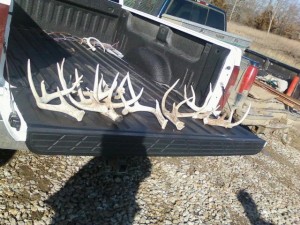
Shed antlers found on the property
Some of these sheds, including the larger ones, were found in bottlenecks.What are bottlenecks? They are physical barriers that limit deer movement to a known and relatively small area. You might call these features pinch points, funnels, etc. Where I was working yesterday, there were several strip pits and dump piles. Strip pits (at least at this property) are about 30’ deep by 150’ wide trenches where coal was mined decades ago. These are now filled with water and are fishing lakes. The dirt from these pits was typically “dumped” close by after the coal was removed.
The dumps are steep, rough, and tough to transverse for man or beast. Deer will certainly go in the dumps and frequently use them as cover, etc., but prefer not to travel through dumps when moving from point A to point B. There were several places where the dumps were within 40-50 yards from the end of a strip pit that was several hundred yards long. The flat ground in between the dumps and the pits created great bottlenecks!
Typically, the longer the barrier (dumps or strip pits on this property) the more utilized the bottleneck. The trails, rubs, etc., we found near the bottlenecks on this property were enough to excite any hunter! I was so excited about the amount of buck sign in these bottlenecks I was ready to begin hanging stands!
My property is just the opposite. It is large patches of hardwoods with a few food plots mixed in. It is very tough to pattern where bucks will travel on my property with any certainty. This is called homogenous habitat. Crop land in the Midwest is full of bottlenecks. Wide open crop fields, especially after the crops have been harvested, tend to funnel buck movement into narrow wood lots, or CRP fields. Where the whitetails move is much more predictable in those areas compared to land that is basically one habitat type (like all woods).
However, bottlenecks can be created! Depending on where I’m working and what’s available, I’ve used discarded round bales of hay, snow fence, etc. Sometimes low value trees can be felled to make bottlenecks. I don’t like this approach as well as others because trees tend to decay rapidly and it’s tough to fell trees in a line with no gaps.
If you are like me and primarily hunt areas where there are very few natural bottlenecks, consider using a readily available resource and creating some. Consider how to approach the stand, wind direction, etc. It’s often easier to grow mature bucks than it is to harvest mature bucks. Creating a bottleneck is an outstanding tool to reap the benefits of your deer management efforts.
Growing (and killing) Deer together,
Grant



